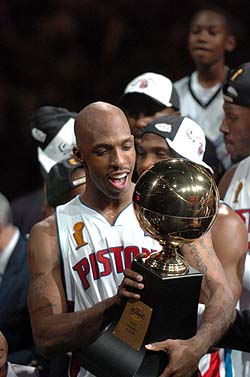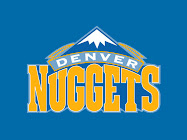Quest is proud to introduce something brand new and especially important in our mission to become a unique and extremely valuable basketball site and enterprise, one that is seeking to explain exactly how basketball games are won and lost.
Up until now, Ultimate Game Breakdowns have (a) been produced mostly for regular season games and (b) consisted mostly of Real Player Rating breakdowns. From now on, Ultimate Game Breakdowns (a) will be produced mostly for NBA playoff games and (b) will consist of Real Player Rating breakdowns AND the new Real Game Ratings breakdowns.
We are sure that after you review the following User Guide for the Real Game Ratings, that you will agree that this is another huge improvement, and that we are closing in on the best possible system (or set of tools) to explain how basketball games are won and lost that you could possibly have.
So now we will present the new User Guide, which of course is also permanently accessible at the Quest Reference Page.
USER GUIDE FOR REAL GAME RATINGS OF ULTIMATE GAME BREAKDOWNS
Real Game Ratings will be a set of team performance measures in games that, quite simply, allow the user to be at a higher level of knowledge and appreciation about basketball than those who are limited to traditional box scores and statistics.
Some of these ratings have been developed by statistical gurus over the last 20 years or so. Some of them have been developed by Quest and have never been seen before. Although these measures are not rocket science, Quest is indebted to "those who have gone before" in developing sophisticated ways of looking at basketball games and players.
Definitely for Quest and hopefully for most of the statistical experts who have blazed the trail, the objective has to be to reveal how basketball games are won.
ADVANCED MEASURES FOR TEAMS IN GAMES
POSSESSIONS
The number of possessions is the foundation needed for several extremely important performance measures. Several statistical gurus have developed formulas for calculating the number of possessions a team had using box score numbers. The results of these formulas are extremely similar. Quest uses the following formula. Though relatively simple, it yields almost exactly the same number of possessions as do more complicated formulas.
Possessions = Field Goals Attempted + Turnovers + (.44 * Free Throws Attempted) - Offensive Rebounds
EFFICIENCY
Efficiency is the single most important "advanced" performance measure. Anytime you are in a hurry, you can simply look at efficiency to evaluate how well a team played either on offense or defense. Efficiency is:
Efficiency: Points / Possessions
Quest has already been reporting team offensive and defensive efficiency separately and as part of the Real Team Ratings. We will now be including this crucial measure in Ultimate Game Breakdowns, which as explained in the 2009 Site News Update in the User Guide will be mostly for playoff games in the future. In other words, Quest will become virtually the only source on the Internet for team offensive and team defensive efficiency in NBA playoff games.
OFFENSIVE REBOUND PERCENTAGE
Most everyone knows that offensive rebounding is very important toward winning games, especially close games. On the other hand, offensive rebounding is less important for the task of looking at a basketball offense in isolation and evaluating how good it is, and how good the guards are in that offense.
Quest will report this in the Ultimate Game Breakdowns for NBA playoff games. We will be virtually the only known source for this information. The formula is:
Offensive Rebound Percentage = Offensive Rebounds / (Offensive Rebounds + Opponent's Defensive Rebounds)
As you can see, this tells you how many of all of the available rebounds were snagged by the offensive squad.
TURNOVER PERCENTAGE
Turnovers are very, very important in determining which team wins the game, especially in close games. Turnovers are interwoven into the only at Quest offensive quality and power measures.
Quest will report this in the Ultimate Game Breakdowns for NBA playoff games We will be virtually the only known source for this information. The formula is:
Turnover Percentage = Turnovers / Possessions
GETTING TO THE LINE
When a team is playing a good defending team, a rough defending team such as the 2009 Denver Nuggets, and/or a team with very tall centers and power forwards, there is a tendency to settle for more outside jump shots than is wise. Basketball players are human, and given the choice between scoring without taking abuse in the paint and scoring with abuse, they will choose the former.
While it is not true that you can win games simply by excessively over weighting driving into the paint in hopes of dunks, layups, and fouls, it is true that you have to maintain some kind of balance between so doing and between shooting from outside the paint. The main reason the balance is important is that it is much more difficult to defend a team that mixes up well drives in the paint with outside shooting.
One complication involved in determining how much a team should take it to the rim is how closely the referees are calling a game. If the referees are not calling the game loosely, if in other words the refs are "letting them play," then defenders have an unusual advantage in the paint, and the offense will be penalized if it drives into the paint too much. If the referees are calling a game tightly, than the offense in many cases will have the advantage in the paint, so obviously the coach should have the offense drive into the paint much more in that case. Keep in mind though that the referees may change how tightly they are calling the game as the game goes along.
Aside from the factor discussed in the previous paragraph, other factors that determine exactly what the balance should be between drives into the paint and outside shots is relatively complicated, and is beyond the scope of this User Guide. But this very, very important subject will be the subject of future Quest reports.
Quest will report the extent to which each team "got to the line" in Ultimate Game Breakdowns for NBA playoff games. We will be virtually the only known source for this information. The measure will be called Getting to the Line:
Getting to the Line = Free Throws Attempted / Field Goals Attempted
As you can see, this is the ratio of free throws to field goals attempted.
EFFECTIVE FIELD GOAL PERCENTAGE
This is simply a juiced up version of shooting accuracy. Basic shooting accuracy, as reported in box scores as field goals made / field goals attempted, is not a very good measure, because two-point and three-point scores are combined in together as if they are the same thing. Effective field goal percentage adjusts basic shooting percentage so that it reflects the extra value of 3-point scores. So this is where the crucial 3-point shooters are given credit for their contributions toward winning the game.
Obviously, this is one of the most important measures for deciding who wins basketball games, and at the player level, for determining who the most valuable offensive players really are. Defensive Effective Field Goal Percentage is just as important for evaluating team defense as is the flip side.
Effective field goal percentage is a crucial part of efficiency which, as explained above, is the most crucial measure of all for determining who is going to win the basketball game.
Quest will be reporting the Effective Field Goal Percentage for teams in Ultimate Game Breakdowns for NBA playoff games. We will be virtually the only known source for this information. The formula is:
Effective Field Goal Percentage = (Field Goals Made + (0.5 * 3-Point Field Goals Made)) / Field Goals Attempted
ASSIST / TURNOVER RATIO
This is number of assists divided by number of turnovers. Point guards have surprisingly different turnover rates. The ones with the lowest turnover rates are obviously the best for efficiency per se, but for overall effectiveness, you need to look at this ratio. A high turnover point guard can nevertheless be a very good point guard if he makes a truly large number of assists. In general, for every turnover a point guard suffers, the more assists he needs to make up for it.
EVALUATION SCALE FOR ASSIST / TURNOVER RATIO
4.00 and More: Ultra Careful Point Guard, arguably too careful
3.50 to 3.99: Extremely Careful Point Guard, possibly too careful
3.00 to 3.49: Very Careful Point Guard
2.60 to 2.99: Careful Point Guard
2.20 to 2.59: Medium Point Guard
1.90 to 2.19: Slightly Careless Point Guard
1.60 to 1.89: Careless Point Guard
1.40 to 1.59: Very Careless Point Guard
1.20 to 1.39: Extremely Careless Point Guard
1.19 and Less: Ultra Careless Point Guard
Unfortunately, it seems that the assist / turnover ratio by itself is not extremely useful for either evaluating point guards or even at the team level for determining how good an offense really is. The problem seems to be that some point guards "need" more turnovers to produce a lot of assists than do others. Some not very careful point guards can more than make up for turnovers by making assists that are more impressive and important than the assists made by careful point guards.
On the other hand, very careless and worse point guards are not going to be able to fully make up for all their turnovers no matter what they do. Assist / turnover ratios below 1.60 would signal point guards who are simply making too many turnovers to have any chance of being truly effective playmakers. Keep in mind though that young point guards will often have higher or much higher ratios than they will have later on.
So although by itself the ratio is not a greatly important thing, when used in conjunction with other offensive indicators, as Quest does, the assist/turnover ratio becomes much more useful.
Quest will be reporting the Assists/Turnovers ratio for NBA playoff games and for a limited number of regular season games. This will be one of the only sources for this, although of course it is easy to make a rough calculation of this in your head simply by looking at a box score.
QUEST FOR THE RING ORIGINAL SYSTEM FOR RATING THE QUALITY AND POWER OF BASKETBALL OFFENSES
Quest as of June 2009 is officially introducing high level performance measures found no where else on the Internet. Most of these are focused on the offense. But obviously, if you look at how an opponent did in these things, you can evaluate a defense using them. Very intelligent basketball fans, offensive basketball coaches, shooting guards, and especially point guards will be able to make the most use of these new measures.
PLAYMAKING IDENTITY
The Quest discussed during many reports in the first 18 months of the site a concept called "playmaking identity". This is basically to what extent a team's offense is organized for maximum effectiveness. The more a team's offense is directed by the guards in general and especially by the point guards, the more effective it will be. Here are some of the reasons for that:
1. Point Guards bring up the ball. For that and for traditional reasons, point guards are supposed to be able to direct, or in other words to organize the offense to some extent. In theory, the more organized the offense, the more effective it will be, mainly because the more organized it is, the more the plays are repetitive, and the more repetitive and practiced the plays, the easier it is to score.
2. Guards in general and especially point guards are directly responsible for running specific plays called by coaches, both plays in general for every game, and specific plays called in specific situations, especially off time outs and in critical late game situations.
3. Point Guards are supposed to be able to read defenses and to be able to evaluate how well defenders are playing in a particular game. They are supposed to be able to use this knowledge to adjust their offense so as to avoid the good defending and attack the bad defending.
Quest is now formalizing the concept. The definition of playmaking identity will be:
Playmaking Identity = ((2 * Point Guard Assists) + Shooting Guard Assists) / Total Assists
As you can see, this is an adjusted version of percentage of assists by guards. It's adjusted because the point guard assists are double weighted while the shooting guard assists are single weighted. In terms of ultimately rating how good the offense is, point guard assists are the most important, shooting guard assists are of medium importance, and assists by forwards and centers are less important.
Assists by forwards and centers are left out of playmaking identity, which is part of the main point of this new measure, because assists by them, while better than no assists at all, are not very reflective of a quality, organized, and efficient offense.
On the other hand, total assists and the assist/turnover ratio, which would include assists by forwards and centers, are very important, as you will see shortly.
Quest for the Ring will be reporting Playmaking Identity for most NBA playoff games and for carefully selected regular season games. This measure has been created here and will definitely be available only here.
PLAYMAKING QUALITY
Playmaking Quality is an extremely important measure developed by Quest. Not only has this particular measure never been seen before, there has never been a measure that gets at how "good" an offense really is as well as this one does.
The idea, like many of the most useful ideas, is relatively simple actually. The theory is that the two most important things in a basketball offense is how well organized it is, as reflected by Playmaking Identity, and how well it scores, as measured by Effective Field Goal Percentage. So the formula is:
Playmaking Quality = Playmaking Identity * Effective Field Goal Percentage
A way to look at this is that it is effective or real shooting adjusted by to what extent the shooting was organized or not. In theory, the more organized the shooting, the more inevitable it was in the game (and the less by chance it was). So this would be an indicator that you can get from every game as to how good the team's offense really is.
The higher the Playmaking Quality as measured by more and more games, the more wins from offense you can expect for that team over the course of a season. Also, the higher the Playmaking Quality, the lessor the chance that even very good defending opposing teams can win with defense alone.
Quest believes that Playmaking Quality may prove to have one of the most high correlations with winning playoff games and Championships of all measures in existence. Why? For one thing, and to reemphasize, Playmaking Quality measures the extent to which an offense is invulnerable to losing to a quality defense.
Quest for the Ring will be reporting Playmaking Quality for most NBA playoff games and for carefully selected regular season games. This measure has been created here and will definitely be available only here.
PLAYMAKING POWER
While Playmaking Quality alone may be enough to ultimately explain why NBA playoff games are won and lost, Quest is introducing another one that may possibly be slightly more important still: Playmaking Power. This is Playmaking Quality multiplied by the team Assists / Turnover ratio. The formula is:
Playmaking Power: Playmaking Quality * (Assists / Turnovers)
Think of this as the ultimate summary measure of the quality of the offense of a team, with everything including the kitchen sink thrown in. In general, we are taking the best offensive quality measure possible (Playmaking Quality) and multiplying by the effective quantity of that offense, as shown by assists / turnovers. Gross quantity of the offense in this framework would be assists. Net or effective quantity would be assists / turnovers, since the more turnovers there are, the less valuable the assists actually are.
Quest for the Ring will be reporting Playmaking Power for most NBA playoff games and for carefully selected regular season games. This measure has been created here and will definitely be available only here.
PRODUCTION OUTLOOK
Ultimate Game Breakdowns for NBA playoff games and for a small number of regular season games will from now on consist of Real Player Ratings and of the Real Game Ratings, the latter as explained in this User Guide, and the former explained in a separate User Guide.
Unfortunately, we do not have the resources at this time to produce all of this for a substantial number of regular season games, let alone for all regular season games. We will at the least produce this for all NBA Championship games, for all Conference Finals games, and for all Conference semifinals games. To the extent possible, we will produce this for Conference quarterfinals, also known as the first round of the NBA playoffs.
Also due to limitations currently existing, Ultimate Game Breakdowns for NBA playoff games, as detailed, will not be available for days, weeks, or possibly even months following those games. We will, however, be able to make sure that all the Breakdowns for a given year's playoff games are completed at the latest by the end of the year in which those games were played. And we will do everything possible to get the Ultimate Game Breakdowns for the Championship out quickly.
If someday we can find qualified individuals to join the Quest Performance Measure Division (so to speak) then we will be able to do more Breakdowns and we will be able to get the Breakdowns done more quickly.

You Can Post Your Response to Anything on Quest Here








